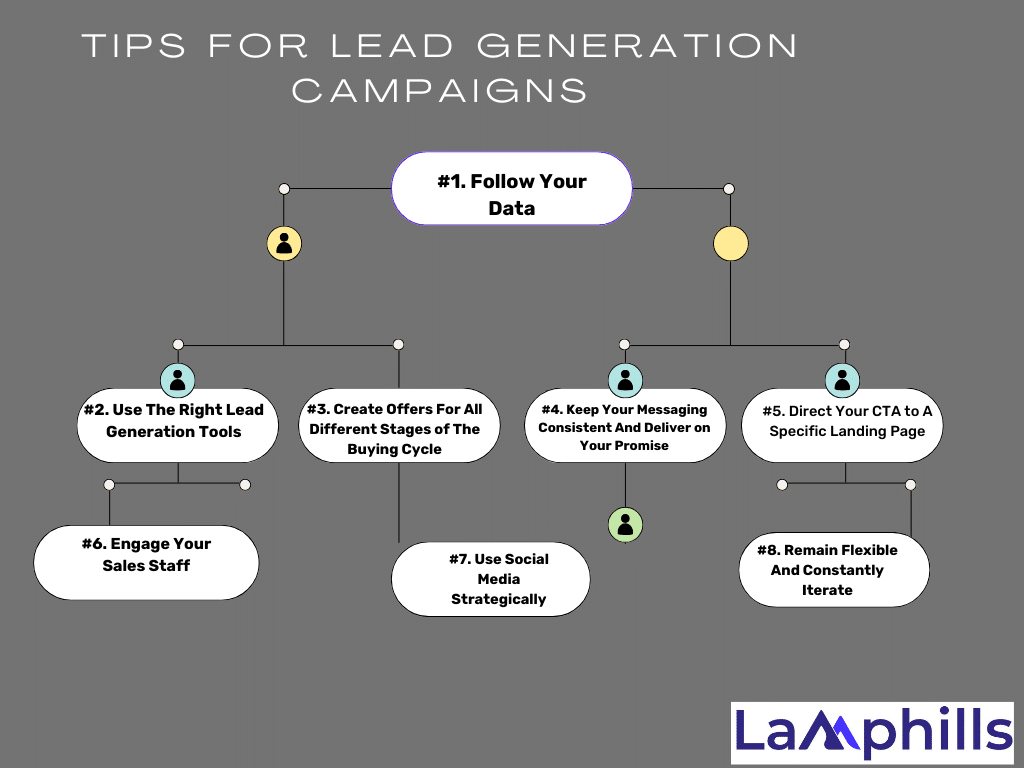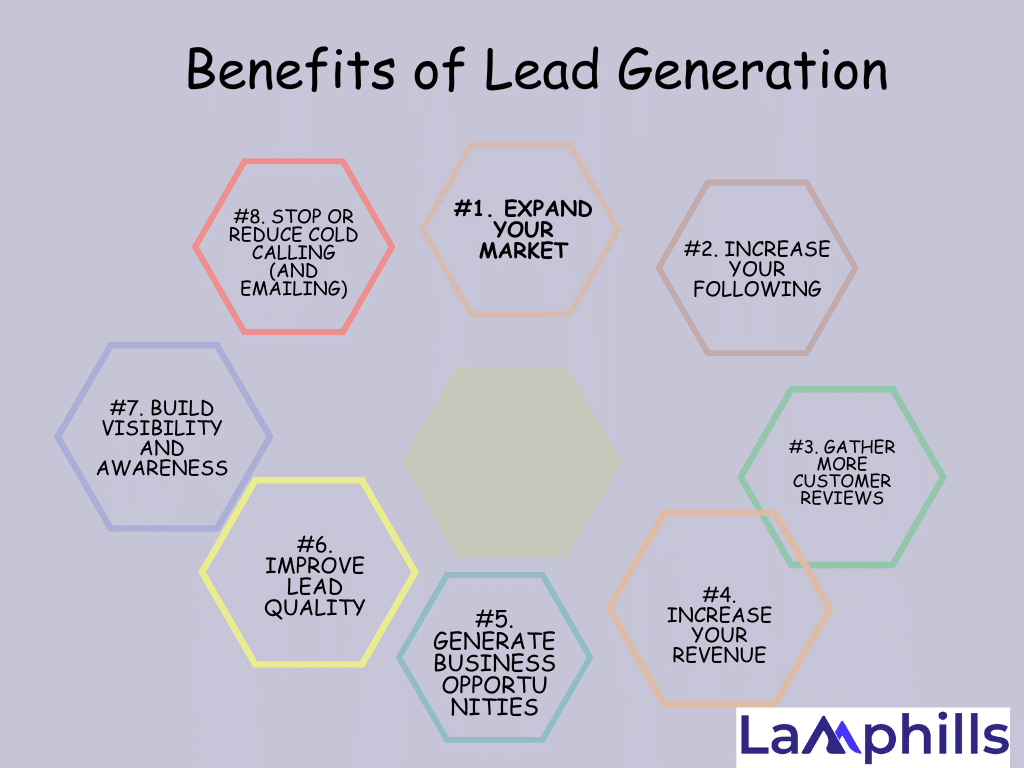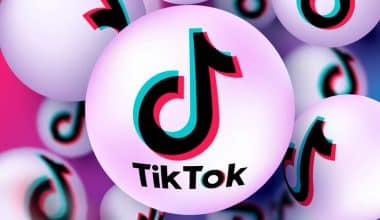Online lead generation is the practice of increasing consumer interest in your products and services using the internet. It is more than just drawing traffic; it’s about engaging with the right people at the appropriate time and converting their curiosity into leads that meet your company’s goals. Over the years, I’ve tried various tactics, both successful and unsuccessful, to figure out how to strike the right balance. Today I am willing to share them with you. The strategies I’m going to share aren’t simply theoretical; they’ve been tried, tested, and polished in real-world circumstances.
Key Takeaways
- Using a combination of SEO, content marketing, email campaigns, and social media can significantly enhance lead-generation efforts. Each channel plays a unique role in attracting and converting leads, making a multi-channel approach essential for maximizing reach and engagement.
- Effective lead generation hinges on providing valuable offers such as ebooks, webinars, and white papers. These resources should address specific pain points or interests of your target audience, making it worthwhile for them to exchange their contact information for access.
- Regularly analyze performance metrics and data from your lead generation campaigns. Tools like visitor tracking and A/B testing can help you understand what works and what doesn’t, allowing you to continuously optimize your strategies for better results.
- Developing a strong relationship with your audience through engaging content and active community building can significantly boost lead quality. Offering valuable information and creating a space for interaction helps to warm up leads and increase their likelihood of conversion.
What is Online Lead Generation?

Online lead generation (also known as digital lead generation) refers to a set of online strategies used to generate interest in your company and initiate business development conversations. There are numerous internet methods that your team can use, many of which I will discuss in this post. Understanding your target audience’s interests and, more crucially, their pain issues is critical for efficient online lead generation. Simply said, lead generation is the process of acquiring and converting people’s interest in your business online.
The Lead Generation Process
Now that you understand how lead generation fits into the inbound marketing methodology, let’s walk through the steps of the lead generation process.
- First, a visitor discovers your business through one of your marketing channels, such as your website, blog, or social media.
- That visitor then clicks on your call-to-action (CTA)—an image, button, or message that encourages website visitors to take some sort of action.
- That CTA takes your visitor to a landing page, which is a web page designed to capture lead information in exchange for an offer.
- Once on the landing page, your visitor fills out a form in exchange for the offer. Voila! You have a new lead. That is, as long as you follow lead-capture best practices.
An offer is the information or resource promoted on the landing page, such as an ebook, course, or template. The offer must be compelling enough for a visitor to volunteer personal information in exchange for access to it.
Notice how everything goes together? To summarize, a visitor clicks a CTA, which directs them to a landing page where they complete a form to receive an offer, at which point they become a lead.
My Techniques for Online Lead Generation

Once you’ve assembled all of these features, you can use your various advertising channels to direct traffic to your landing page and begin producing leads. But which channels should you utilize to promote your landing page? Let’s talk about the front end of lead generation: lead gen marketing.
If you’re wondering how to produce leads in digital marketing, start by analyzing your current web channels and identifying conversion chances. This might cover anything from your website to your social media presence, both organic and paid. Let’s get into real business now: the tactics that have worked for me.
#1. Search Engine Optimization
SEO seemed too slow to me in the beginning. But when I eventually spent time optimizing my site—adding targeted keywords and enhancing user experience—I noticed a significant difference. My website traffic increased, and those visitors were more than just passersby; they were people who sought what I had to offer. One thing I cannot emphasize enough is the need of patience. SEO is a time-consuming process, but when it works, the rewards are plentiful.
Whenever your prospects want to learn something or solve a problem, they go online. You may enhance your internet presence—website, blog, social media accounts, aggregator platforms, etc.—so that they come to you. People are looking for solutions to their problems, if your content helps them, they are likely to buy a related product or service from you. Many powerful SEO tools are available for a low monthly cost.
#2. Content Marketing
Content marketing is an effective technique to drive qualified leads to your landing page. To accomplish this, you must generate helpful and informative content and disseminate it to the intended audience. Although the content is free to read, you can include calls to action across the website to request their contact information in exchange for further relevant information like an e-book, reports, or white papers.
If your content addresses their pain point, people are likely to sign up for your offer. Content marketing is a long-term game; it should take at least six to nine months for organic visitors (market-qualified leads) to convert into sales (sales-qualified leads).
#3. Send Regular Emails
By following this checklist below, you’ll be well-equipped to create and manage effective email drip campaigns that nurture leads, improve engagement, and drive conversions.
Email is a great place to reach people who already know your brand, product, or service. It’s much easier to ask them to take action since they’ve previously subscribed to your list. Pro tip: When writing emails, use CTAs with compelling copy and an eye-catching design to grab your subscriber’s attention.
#4. Blogging
Blogging isn’t a magic bullet for immediate traffic, but a proven strategy has paid dividends for me. I made it a habit to blog regularly, focusing on high-ranking keywords and offering genuine value. Consistently blogging has brought me leads and opportunities I hadn’t expected, such as invitations to speak at webinars. In one instance, a blog post I published about a year ago still brings in leads today. It’s like a silent salesperson working 24/7.
If you feel you are not yet ready to start content marketing on outside platforms, consider starting a blog. Create blog posts around keywords your prospects are searching for and you can attract organic traffic from multiple search engines. Don’t forget to add calls to action in the blog posts to generate leads from the organic traffic.
#5. Social Media Marketing
Social media platforms are an excellent approach to building a following by sharing relevant content and then encouraging people to take suitable action. You can promote your services and put a call to action in your bio, caption, or posts. Get some free social media management tools to distribute material across numerous networks at the same time.
Social media networks like Facebook, Instagram, X (formerly Twitter), and LinkedIn are effective tools for immediately contacting potential leads. These sites make it simple to direct your followers to take action, from Instagram stories’ swipe-up option to Facebook bio links to URLs on X.
#6. Collaborate With Other Businesses And Creators
Business partnerships are frequently a source of enormous untapped potential for lead creation. Even if your products and services are different, your target consumers are typically very similar. Partner marketing can be as basic as placing a logo on your partner’s website. However, you can go a step further by collaborating on content strategy, promotional materials, and other initiatives. This allows you to get your respective brands in front of each other’s customer bases in a mutually beneficial manner. Another option is to form collaborations with influencers who share your brand’s goals and ambitions.
More Advanced Strategies: What Took My Lead Generation to the Next Level
#7. Build A Community
Building an online community was not something I had intended, but once I did, it revolutionized my lead generation strategies. Communities, such as LinkedIn groups or specialist forums, build a dedicated audience that already trusts you and is eager to interact. I’ve witnessed firsthand how an engaged community can convert passive followers into eager leads. I established a small network focusing on digital marketing strategies. It’s grown to be one of my most valuable sources of new company prospects and relationships over time.
Communities are fantastic for converting visitors to leads. They’re also an excellent technique to develop and qualify existing leads. For example, suppose you have a new free trial user. They possess a question about the product, so they head to your knowledge hub only to find a forum of engaged promoters discussing your product and providing guidance on how to use it. Seeing how others use your product and the extent of your existing customer base can make the difference between a user who chooses to upgrade and one who simply walks away.
#8. Webinars
A webinar is the online version of a seminar or educational course. The lead-generating webinar is usually provided free of charge. Because registration is required, you can collect basic information on session attendance. A webinar, like its offline counterpart, should be instructional, not a thinly veiled sales pitch. The secret to a successful webinar is to choose topics that are both interesting and valuable to your ideal target client. Attendees develop trust in your company over time and are more likely to consider you when they have a relevant need.
Hosting webinars has been one of the most efficient methods I’ve discovered for generating high-quality leads. Offering free webinars helps you to educate your audience as they engage with you directly, they build a connection that’s difficult to achieve through other channels. Plus, you can collect valuable lead information during registration.
#9. Research Reports
Presenting research papers on themes that are relevant to your target audience is a tried-and-true online lead-generation tactic. You gain benefits in two ways. First and foremost, these articles are effective lead generators—your buyers value data-driven insights. Second, they increase your trust and build your internet brand. Furthermore, research studies might be a great way to collaborate with a trade association or a non-competing company to cut marketing costs and boost reputation.
#10: White Papers, Guides, And Ebooks
White papers and executive guides, two of the most popular online lead-generation tactics, can help establish credibility and produce qualified prospects. You can offer these in-depth items on your website (typically placed behind a registration screen to collect contact information), or you can distribute them through third-party services. White papers and guides also make great pay-per-click offers. A variation of these formats is the ebook. Typically longer than a white paper or guide, it serves a similar function. An ebook doesn’t have to be as long as a traditional business book, but it should dive sufficiently deep into a topic that it gives a reader a solid understanding of the problem and solution.
Tips for Online Lead Generation

In any given lead generation, there can be many moving parts. This means it can be challenging to tell which parts of your campaign are working and which need fine-tuning. Here are a few tips that can help when building lead generation online.
#1. Follow Your Data
If you want to develop a lead generation engine, start with the data that is already available to you. Begin by archiving items that consistently rank well, generate traffic, and have a clear connection to your product. Once you’ve determined what works well, you can decide where to position CTAs.
“For these posts, ask yourself what the missing middle piece is between what someone is reading about and what you can offer them,” says AJ Beltis, a senior marketing manager at HubSpot who focuses on media conversion.
Remember that your call to action should not deviate from the theme of the piece. “Keep it straightforward and logical, and the leads will come flowing in.
#2. Use The Right Lead Generation Tools
How much do you know about the visitors to your website? Do you happen to know their names or email addresses? What about the pages they viewed, how they navigated, and what they did before and after completing a lead conversion form?
If you don’t know the answers to these questions, you’re probably having trouble engaging with visitors to your website. These are questions you should be able to answer with the correct lead-generation tools. There are a few different tools out there that’ll help you create different lead gen assets to use on your site, like:
- CTA Templates. Create clickable CTA buttons to use on your blog, landing pages, and elsewhere on your site.
- Lead Generation Software Tools. This free tool from HubSpot includes lead capture insights features, which will scrape any pre-existing forms you have and add those contacts to your existing contact database. You can also create pop-ups, hello bars, or slide-ins — called “lead flows” — to help you immediately turn visitors into leads.
- Visitor Tracking. Hotjar’s virtual heatmap tool creates a color-coded representation of how a user navigates your site. You can then understand what users want and care about.
- Live chat. Live chat and chatbots are excellent for establishing first contact with leads who are interested in your company. You can also use them to capture contact details and send leads more in-depth information about your products or services — or generate conversions right away.
HubSpot customers can create and embed forms using HubSpot, which automatically populate into your CMS.
Non-HubSpot customers can use a form creation tool like Contact Form 7, JetPack, or Google Forms, and then use HubSpot’s free collected forms feature to automatically capture form submissions and input them to a contact database.
#3. Create Offers For All Different Stages of The Buying Cycle
Not all of your website visitors are ready to speak with your sales staff or view a product demo. Someone at the beginning of the buying process may be interested in an informational piece such as an ebook or a guide. In comparison, someone who is more familiar with your firm and is nearing the end of their journey may be more interested in a free trial or demo.
Make sure to create offers for each step and include CTAs for these offers throughout your website. Yes, it takes effort to generate good content that moves your leads down the funnel, but if you don’t provide anything for visitors who aren’t ready to buy, they may never return to your site.
The good news is that sales software can considerably speed up the process. You can organize leads based on the stages of the buyer’s journey, then easily build up and deliver targeted email campaigns for each group – all without relying on multiple platforms.
If you want to take personalization a step further, consider employing smart CTAs. Smart CTAs determine where a user is in the buyer’s journey, whether they are a new visitor, a lead, or a customer, and display appropriate CTAs.
#4. Keep Your Messaging Consistent And Deliver on Your Promise
The most effective lead generation efforts have a smooth transition from ad language and design to the delivery itself. So ensure you’re delivering a consistent message and adding value to everyone who interacts with your lead capture.
Your lead generation strategy should be consistent with everything else on your website, blog, and the product you want to offer. If not, you will have problems moving your lead to the next lifecycle stage.
#5. Direct Your CTA to A Specific Landing Page
This may sound basic, but you’d be astonished at how many marketers fail to establish specific landing pages for their offers. CTAs are used to direct visitors to a landing page where they can receive a specific offer.
For example, don’t utilize CTAs to push traffic to your homepage. Even if your CTA is about your brand or product, you should direct them to a specific landing page with an opt-in form. If you can employ a call to action, direct them to a page that will convert them into a lead.
#6. Engage Your Sales Staff
Remember when I talked about lead scores? It isn’t quite feasible without your sales team’s assistance. How will you know what qualifies a lead for sales if you don’t know whether your defined SQLs were sold?
Your marketing and sales teams need to be aligned on the definitions and the process of moving a lead from MQL to SQL to opportunity before you even begin to capture leads. Be open to evolving your relationship with sales and how you guide leads along your funnel.
#7. Use Social Media Strategically
While most marketers think of social media as top-of-funnel marketing, it can also be a useful and low-cost source of lead creation, as seen in the lead generation tactics above.
Begin by including direct links to the landing pages of high-converting offers in your Facebook, X, LinkedIn, and other social network postings. Inform visitors that you are bringing them to a landing page. This way, you are setting expectations.
You can also conduct a lead generation analysis on your blog to determine which posts produce the most leads, and then regularly link to them in social media postings. Another technique to acquire leads from social media is to hold a contest. Contests are fun and engaging for your followers and can also teach you a ton about your audience. It’s a win-win.
#8. Remain Flexible And Constantly Iterate
My final piece of advice is to always keep testing. Lead generation trends change frequently, This is because what works today may not work tomorrow. Hence, your lead generation approach must be as dynamic as the people you are targeting. Trends, behaviors, and views evolve, and so should your lead generation marketing.
A/B split testing may help you determine which CTAs work best, which landing pages convert better, and which copy resonates with your target demographic. Experiment with layout changes, design, UX, content, and advertising channels to see what works.
What are the Benefits of Lead Generation?

You get it — leads are essential to the sustainability of your business. But how exactly does lead generation benefit your organization? Here’s a look at reasons you should focus on lead generation.
#1. Expand Your Market
When you first launched your business, you probably targeted a specific group of people. But is this the only sector you can or should target? Lead generation allows you to learn about your prospects.
Perhaps you are seeing engagement from companies and job roles that are not featured in your marketing initiatives. With lead generation, you’ll notice this pattern and can incorporate it. You now can enter previously untapped markets.
#2. Increase Your Following
Content production and communication are critical components of lead-generation initiatives. It means creating high-quality content and engaging in social media conversations. The idea is to share valuable information with your target audience and promote yourself as an industry thought leader In turn, this builds a community of professionals who like and follow your brand. Some will become customers and even more may turn into brand advocates. And who couldn’t use more of those?
#3. Gather More Customer Reviews
Social proof is essential for convincing prospects to become consumers. There’s no better example than a review from a previous client. However, you may not always receive these (even if your product or service is exceptional). As a result, soliciting customer feedback and evaluations pays off (literally). You may then include this in your marketing materials, including your website, emails, videos, social media postings, and infographics.
#4. Increase Your Revenue
When done correctly, lead creation can increase your brand’s capacity to reach target prospects. To stimulate interest from these specific groups, use the appropriate messaging, offer, and content.
This will make it easier to get the attention of qualified individual leads, which makes it easier for sales to convert them. The revenue growth potential is great, especially when you’re focusing on interests and pain points your audience cares about.
#5. Generate Business Opportunities
Lead creation is not only useful for discovering prospects. It can also provide business prospects. Perhaps a non-competing brand in your industry might contact you to hold a webinar together. And by working together, you gain access to their audience (and vice versa). A mutually productive cooperation can generate more leads.
#6. Improve Lead Quality
Creating material and publishing it on the internet can increase your visitors. Perhaps a ton of it. However, if your visitors do not convert into leads, your efforts will be in vain.
With lead generation, you are adopting a very specific approach to content production. Everything you write for your business, from website and email copy to social media and blog articles, must be tailored to these unique audiences.
This makes it easier to create topics and messages that resonate with each audience. And by doing this, you’ll improve the quality of your leads, which improves conversions and sales.
#7. Build Visibility And Awareness
Perhaps you are a startup that has lately debuted without much fanfare. Alternatively, you may be an established firm that has been operating quietly for many years. And now you want to attract more eyes (and cash) to your organization.
Increasing exposure and awareness is essential for changing the tide in your favor. You may accomplish this by developing content that your target audience cares about and sharing it on the platforms they use.
#8. Stop or Reduce Cold Calling (And Emailing)
Why continue to use ineffective outbound strategies such as cold phoning and emailing when you already have hot leads? This will free up your salespeople’s time, allowing them to focus on completing more deals with leads who already desire your product.
How do you make money from lead generation?
First, conduct market research to generate leads. Then,
- Define your best quality leads & customer cycle.
- Align your offering with the wants & needs of your best leads.
- Determine how to approach prospects at each stage of their buying journey.
- Develop messages that bring prospects closer to purchase.
What is the highest-paid lead generation?
The highest-paying lead generation niches typically include finance, insurance, real estate, legal services, and healthcare.
Conclusion
Lead generation is not a one-size-fits-all solution. Finding what works for your business requires time, experimentation, and tenacity. However, if you concentrate on providing actual value, cultivating relationships, and developing your techniques over time, you will see your efforts rewarded. These insights are based on my trial and error, and I hope they inspire you to boost your sales funnel with new, real-world tactics.






